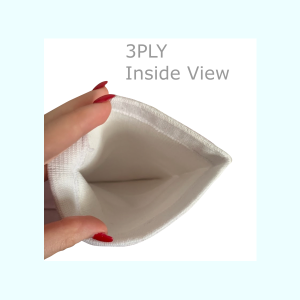Prosthetic Socks
Traditionally, prosthetic socks have provided cushioning and a means to adjust the volume of the socket. Prosthetic socks are available in several materials including wool, cotton and synthetics. Sock thickness is measured by the “ply” rating, most commonly from 1-ply to 6-ply. By varying the ply number and/or the number of socks worn, amputees can adjust for changes in the size of their residual limb. Prosthetic socks should protect the skin against the destructive forces of pressure and friction in the skin-socket interface, while also absorbing perspiration with a wick-like action and allowing for ventilation.

Sock Materials
Wool
Wool is an excellent fiber for prosthetic socks due to its resiliency, absorbency and conformability. Wool’s resiliency offers cushioning and provides maximum comfort to the wearer. Its ability to absorb perspiration quickly without feeling wet provides excellent comfort in cold, hot, humid and dry climates. Due to the variety of residual limb shapes, it is also important for the prosthetic sock to conform to the contours of the limb without wrinkling. Knitted wool provides a smooth, wrinkle-free fit.
Cotton
Cotton has limited application as an interface material in prosthetics. Its advantages are that it is nonallergenic and neutral to any skin type. It can also be washed and bleached with little dimensional change and it is tough; however, cotton does not offer the level of absorbency or the cushioning provided by wool.
Synthetic Fibers
Man-made fibers are widely used in the production of prosthetic socks and may be used alone in their construction or in combination with natural fibers. One example of an all-synthetic sock is made of polypropylene and Lycra. This combination provides wicking of perspiration and transports moisture across the fiber and away from the skin. The Lycra serves to accommodate edema or atrophy more easily due to its elasticity and ability to return to its prestretched shape. Wool is increasingly being blended or combined with man-made fibers. These products provide the softness, strength or resiliency of the man-made fibers used and are easier to care for because they tend to resist shrinking and felting. They also cost less than all-wool socks and can take advantage of plaiting – the knitting of one fiber on the outside of a sock and another fiber on the inside to benefit from the qualities of both fibers. One such sock uses wool on the outside for resiliency and toughness and Dupont CoolMax on the inside, which provides softness and keeps the skin cool by transporting perspiration away from the skin faster than any other fiber. The fibers spread perspiration over a larger area so that it will evaporate more quickly. This sock also contains Microsafe fiber that resists bacteria and fungus growth for skin health and odor reduction. Lycra/spandex provides excellent conformability and free motion of the knee.
